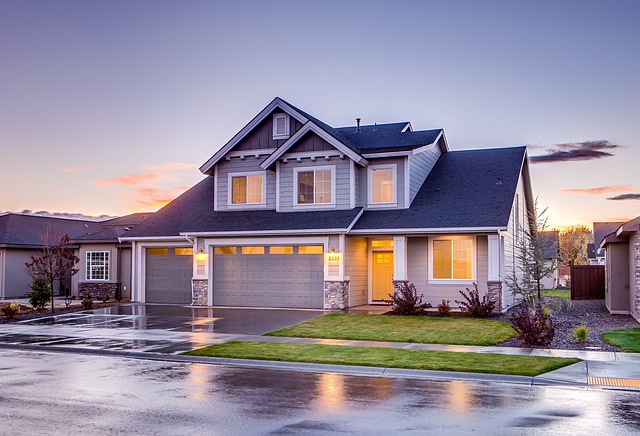Home security is a comprehensive approach that includes physical barriers, smart technology integration, cybersecurity measures, and emergency response planning to protect your home and family. Essential physical defenses involve reinforcing doors and windows with robust locks, security film or impact-resistant glass, and anti-intrusion devices like charlie bars for sliding glass doors. Strategic lighting, particularly motion-sensor lights, can act as a deterrent and enhance visibility. Advanced home security systems offer real-time surveillance and monitoring, with cameras and alarms that alert you to unauthorized entry attempts. These systems can be integrated with smartphones for remote access and control, simulate occupancy, and detect other potential issues like water leaks. For cybersecurity, maintaining a secure Wi-Fi network with updated firmware, strong passwords, and encryption is critical, along with anti-virus software and safe internet practices for all household devices. Educating family members on these security measures is key to protecting against digital threats. Additionally, a detailed emergency response plan tailored to your home and family, including escape drills and clear meeting points, is essential for physical safety. A combination of these strategies ensures that your home remains secure across both the physical and digital domains, providing peace of mind and preparedness for any situation.
Ensuring the safety of your family is paramount in today’s world. This article delves into essential home security strategies tailored for households. We’ll explore identifying potential vulnerabilities, investing in reliable security systems, reinforcing physical barriers, bolstering digital defenses, and crafting a comprehensive family safety plan. From understanding common entry points to integrating smart home technology, these tips aim to safeguard your loved ones and valuables effectively. Home Security is a multifaceted endeavor; learn how to approach it comprehensively for peace of mind.
- Understanding Your Home's Vulnerabilities: An Overview of Common Entry Points and Potential Weaknesses
- Investing in Quality Security Systems: A Guide to Alarms, Cameras, and Smart Home Integration
- Strengthening Physical Defenses: Door Reinforcement, Window Locks, and Lighting Strategies
- Establishing a Robust Digital Defense: Securing Wi-Fi Networks and Protecting Personal Data
- Creating a Family Safety Plan: Drills, Emergency Contacts, and Child-Safety Protocols
Understanding Your Home's Vulnerabilities: An Overview of Common Entry Points and Potential Weaknesses

When fortifying your home against potential intruders, it’s crucial to recognize common entry points and potential weaknesses in your home’s security profile. Doors and windows are primary targets for burglars due to their frequent use and accessibility. Therefore, ensuring robust locks on all entrances is a fundamental step in home security. Consider deadbolt locks with at least one-inch throw for doors, as they offer greater resistance against forced entry. Sliding glass doors often present an easy target if not properly secured; installing charlie bars or anti-lift devices can prevent them from being lifted off their tracks. First-floor windows, particularly those near trees or ladders, can be compromised; security film or impact-resistant glass can deter smash-and-grab incidents.
In addition to physical barriers, motion-sensor lights can illuminate dark areas around your home, deterring potential intruders and aiding in the surveillance of your property. Smart home systems with cameras, alarms, and remote monitoring capabilities can provide an additional layer of security. These systems allow you to keep an eye on your home from anywhere, and some offer integration with local law enforcement for immediate response to alerts. Understanding your home’s vulnerabilities is the first step in designing a comprehensive home security strategy that protects your family and safeguards your possessions. Regularly testing your home security system and updating your protocols will ensure that your home remains a fortified safe haven. Home Security is not just about deterring theft; it encompasses a range of measures to safeguard against various threats, ensuring peace of mind for you and your loved ones.
Investing in Quality Security Systems: A Guide to Alarms, Cameras, and Smart Home Integration

When prioritizing home security for your family, investing in quality systems that encompass alarms, cameras, and smart home integration is a prudent approach. Advanced security systems can offer a comprehensive defense against intruders, providing peace of mind. Alarms serve as a deterrent with their loud, attention-grabbing signals upon unauthorized entry attempts, alerting both the household and neighbors to a potential security breach. Opt for systems that have both door and window sensors, as these are common points of entry for intruders. Cameras, whether stationary or with pan-tilt-zoom capabilities, can monitor activity in real time, allowing you to keep an eye on your property from anywhere through smartphone apps. Consider high-definition options with night vision for clear images, even during low-light conditions.
Smart home integration takes home security a step further by connecting various devices and sensors within your home, offering automated responses to certain triggers. Smart locks can grant or revoke access remotely, while smart lighting systems can simulate occupancy, creating the illusion of someone being at home even when you’re not. Additionally, smart thermostats and water leak detectors can prevent costly repairs from going unnoticed. Ensure that your security system is compatible with other smart devices for a cohesive defense strategy. The integration of these systems can often be managed via a single app or control panel, providing a user-friendly experience while maintaining robust security measures. It’s advisable to research and compare various home security solutions to find the most suitable system that aligns with your family’s needs and budget.
Strengthening Physical Defenses: Door Reinforcement, Window Locks, and Lighting Strategies

When considering home security for families, reinforcing physical defenses is a critical component in protecting your household. Begin with the doors, which are common entry points for intruders. Strengthening your exterior doors by installing heavy-duty strike plates and high-quality deadbolt locks can significantly deter forced entries. Ensure that all doors have at least one inch-thick solid wood or metal frame and a reinforced door jamb to resist tampering. Additionally, consider the installation of a door brace or charlie bar on sliding glass doors for an extra layer of security.
Windows are another vulnerable point that require attention. Opt for window locks designed to withstand attempts at forced entry, and consider installing laminated glass, which can help prevent breakage. For added security, keep all ground-floor windows locked at all times and trim shrubs and trees so they don’t provide concealment for potential intruders.
In the realm of lighting strategies, good home security incorporates strategic illumination to deter criminals and ensure your family’s safety. Motion-sensor lights around the perimeter of your home can act as a powerful deterrent, activating when unexpected activity is detected. Timers for indoor lights can mimic occupancy, suggesting someone is home even when you’re away. Exterior lighting should be well-maintained and adequately bright to illuminate all entrances and paths, creating clear visibility around your property. Home security systems with cameras can also provide real-time monitoring and serve as a visual deterrent, reinforcing the physical defenses of your home.
Establishing a Robust Digital Defense: Securing Wi-Fi Networks and Protecting Personal Data

In today’s interconnected world, safeguarding your family’s digital presence is as critical as securing your physical home. A robust digital defense begins with the security of your Wi-Fi network, which serves as a gateway to a multitude of connected devices within your household. To fortify this frontier, start by ensuring your wireless router firmware is up to date, as these updates often include critical security patches. Employ a strong, unique password for your Wi-Fi network and consider enabling WPA3 encryption for the most secure connection currently available. Regularly change passwords and monitor connected devices to prevent unauthorized access that could compromise your home network, potentially exposing personal data to cyber threats.
Beyond the router, personal data protection is paramount. Utilize reputable anti-virus and anti-malware software on all devices and keep them current with the latest threat definitions. Educate every family member about safe browsing habits, phishing attempts, and the importance of not sharing sensitive information online. Additionally, consider a virtual private network (VPN) to encrypt your internet traffic, especially when accessing sensitive data or conducting transactions over public Wi-Fi networks. Implementing these measures creates a layered defense that helps protect your family’s digital assets, ensuring that your home security extends well beyond the front door.
Creating a Family Safety Plan: Drills, Emergency Contacts, and Child-Safety Protocols

When it comes to safeguarding your family, having a comprehensive safety plan is paramount in the event of an emergency. A well-crafted home security strategy includes regular practice of escape drills that are tailored to different scenarios such as fires, extreme weather events, or intruders. Each family member should understand their roles during these drills, which should be conducted regularly so that everyone remains calm and knows exactly what to do if a real emergency occurs. Designate safe zones in your home where family members can convene after evacuating. Additionally, ensure that all escape routes are clear and accessible at all times.
In parallel with physical preparedness, maintaining an updated list of emergency contacts is crucial. This list should include local emergency services, trusted neighbors, family physicians, and poison control centers. It’s also vital to have a plan for your children, including child-safety protocols that are age-appropriate. These protocols may involve teaching them how to recognize unsafe situations, whom to contact in your absence, and the importance of not opening the door for strangers. For younger children, consider using a home security system with features like real-time alerts and monitoring services that can provide an extra layer of protection and peace of mind. By combining a robust home security system with a well-thought-out family safety plan, you can significantly enhance the overall safety and security of your household.
In concluding our exploration of home security, it’s clear that a comprehensive approach is key to safeguarding your family. By understanding your home’s vulnerabilities, investing in reliable security systems, strengthening physical defenses, and establishing a robust digital defense, you can create a layered protection strategy. Additionally, having a well-prepared family safety plan ensures that every member knows how to respond in an emergency. These measures collectively contribute to a secure home environment, offering peace of mind for families. Home security is an ongoing commitment that evolves with technological advancements and changing threats; thus, staying informed and proactive is essential. Remember to regularly review and update your security practices to maintain the highest level of protection for your loved ones and your property.
